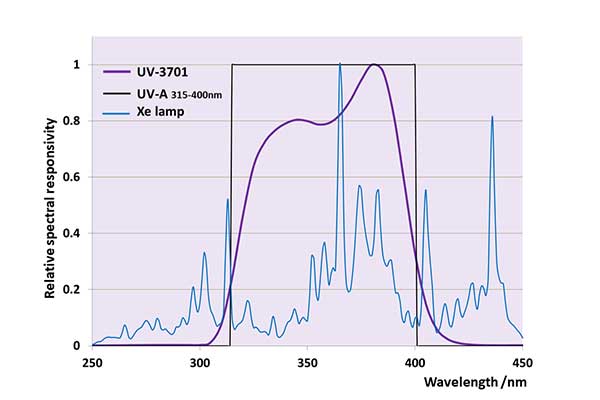
Reduced Measurement Uncertainty for UV-A, UV-B and UV-C Radiometers
UV radiometers do not come in ‘one size fits all’ format. They may be required to have a flat spectral response over specific spectral bands (e.g. UV-A, UV-B and UV-C) or to match particular actinic spectral functions (e.g. ICNIRP or erythema). UV radiometers are typically constructed from a photo-detector and filter combination, often with an entrance optic such as a cosine diffuser.
What is common to all filter-corrected radiometer designs is that their spectral responsivity function will never perfectly match the target specification and further production-related tolerances will also arise. These inevitable spectral mismatches introduce measurement uncertainties. Their magnitude depends not only on the deviations of the spectral responsivities, but also on the relative spectral power distribution of the radiation source being measured. The technical report CIE 220: 2016 [1] presents a methodology for determining the expected measurement uncertainty due to spectral mismatch.
Spectral mismatch errors arise from imperfections in the spectral response functions of radiometers. However, these errors have negligible effect on the measurement result if the relative spectral power distribution, i.e. ‘spectral shape’, of the reference lamp used for calibrating the radiometer matches the spectral shape of the UV source in the application.
But what happens if the emission spectrum differs significantly from that of the calibration lamp? The technical report CIE 220: 2016 [1] provides useful information for determining the measurement uncertainty of UV radiometers resulting from the spectral mismatch. The values determined can be used as correction factors for the adjustment of the UV radiometer for known emission spectra.
In addition to knowledge of the spectral power distribution of the source to be measured, the application of CIE 220: 2016 [2] requires the following information to be provided by the manufacturer of the UV radiometer:
- Spectral power distribution of the reference lamp used for calibration
- The spectral responsivity measured for each individual UV radiometer
Every UV radiometer produced by Gigahertz Optik GmbH is calibrated with respect to its relative spectral sensitivity. See especially our UV-C Radiometer or UV Radiation Curing Meters. This is carried out in our own calibration laboratory accredited for optical radiation measurements. The spectral data for the calibration lamp and the radiometer’s responsivity is available upon request. Knowledge of the relative spectral distribution of the source under test enables the spectral mismatch error to be corrected for, thereby reducing the overall measurement uncertainty. Optionally, Gigahertz-Optik GmbH offers correction values for specified sources to be incorporated within regular calibration. This is of particular interest when the UV radiometer is used in applications with known UV source types.
References
[1] CIE 220:2016, Characterization and Calibration Method of UV Radiometers
[2] How to apply CIE 220:2016 – Characterization and Calibration Method of UV Radiometers, see UV News 12